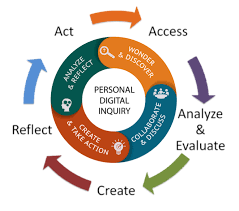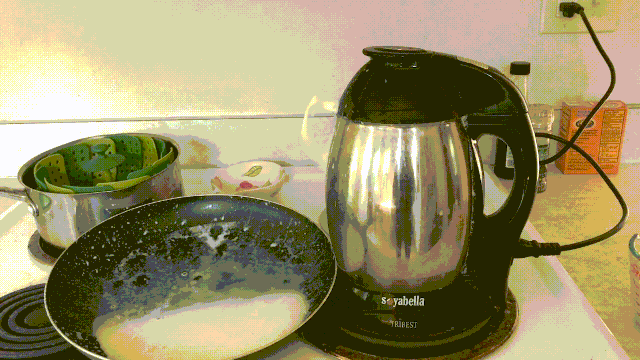In the final week of CEP 810, I was asked to reflect on my learning about teaching with technologies. I initially wanted to learn how to use a variety of technology programs for educational purposes, and learn how to incorporate technology into the classroom in an effective, efficient way to support student learning. This course provided many opportunities to learn and practice using technology programs to support my own professional development. By developing and practicing my own 21st century learning skills, I am better equipped to teach students these skills. As a result, this course helped me to effectively integrate technology into the classroom to support and enhance student learning and understanding.

My technology journey began with the initial stages of my Networked Learning Project (NLP). The NLP challenged me to learn something I’ve never done before only using online videos, blogs, and community forums. Therefore, I developed and practiced using 21st century learning skills to successfully complete my NLP. The NLP supported Will Richardson’s (2012) thought that “educators have to reexamine their own learning practice and move toward becoming more networked and connected themselves”. By documenting and analyzing my progress along the way, I learned how a similar project could be carried out in my own classroom.
Although I faced many problems throughout my NLP, I discovered a network of individuals online with suggestive solutions. This led to the creation and expansion of my Professional Learning Network (PLN). My PLN consists of a network of people, online tools and resources, and forums that facilitate long-term development of my teaching practice. One of the most helpful additions to my PLN is the creation of a Twitter account. I originally thought Twitter was a social media account solely used to inform the world of one’s status. I now realize Twitter connects people from around the world to exchange information, discuss common interests, virtually attend conferences, and stay informed of current events. Twitter is one of the most useful online tools when learning from and communicating with others online.

- My Updated PLN retrieved from Popplet
Similar to my own technology experiences before taking this course, students’ technology experiences and skills are limited to entertainment and social media programs. Although students are able to use these online programs, they lack the 21st century learning skills to utilize technologies to become problem-solvers and innovators. Following the TPACK framework, I learned how to create lessons that incorporate technology to provide my students the opportunity to develop and practice 21st century learning skills to essentially become successful future innovators.

- Image retrieved from tpack.org
One challenge I still face when integrating technology in the classroom is keeping students focused and on task. Due to the multiple functions of a single piece of technology, even when interested in the lesson, a single sound, vibration, or notification captures a student’s attention and they become disengaged from the lesson. So how can teachers monitor students to ensure they are on task?
Dr. Punya Mishra explains that part of this problem stems from today’s technologies not being designed for educational purposes (21st Century Learning International, 2015). Since technology is a regular component in today’s society, we cannot simply ban it from classrooms. Instead, educators must repurpose technologies to lead and facilitate student learning and understanding (21st Century Learning International, 2015). When integrated effectively, the use of technology provides students the opportunity to learn, understand, and transfer knowledge to other contexts (Ito et al., 2013, p. 33). This course served as a great introduction to various technology platforms and programs that I plan to incorporate in my classroom and everyday life.
References
21st Century Learning International. (2015, July 14). 21CLI – Punya Mishra – Keynote Speaker (4th Annual Conference). Retrieved June 18, 2018, from https://www.youtube.com/watch?v=3xf5tD-XOzQ&feature=youtu.be
Ito, Mizuko, Kris Gutiérrez, Sonia Livingstone, Bill Penuel, Jean Rhodes, Katie Salen, Juliet Schor, Julian Sefton-Green, S. Craig Watkins. 2013. Connected Learning: An Agenda for Research and Design. Irvine, CA: Digital Media and Learning Research Hub.
Popplet. (2013). Popplet. Retrieved June 27, 2018, from http://popplet.com/
Richardson, W. (2012, September 14). Why School? TED ebook author rethinks education when information is everywhere. Retrieved May 21, 2018 from https://blog.ted.com/why-school-ted-ebook-author-rethinks-education-when-information-is-everywhere/
Koehler, M. J. (2018). TPACK Explained. Retrieved June 18, 2018, from http://tpack.org/











